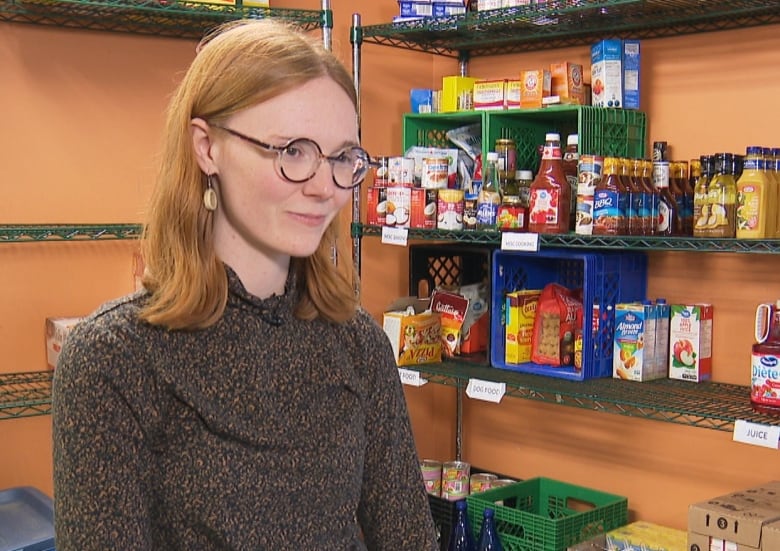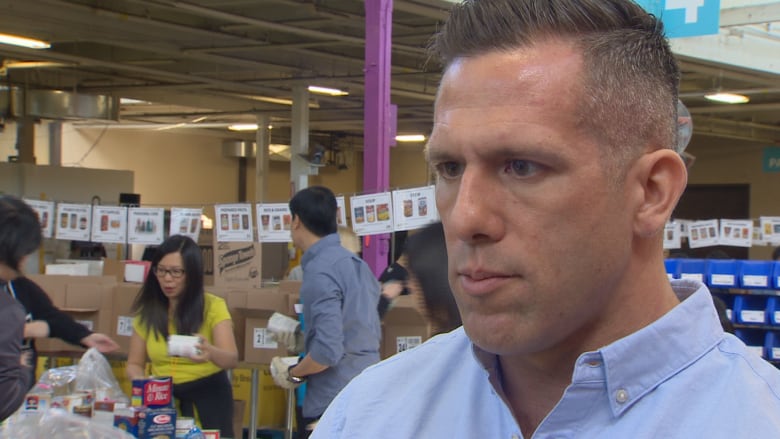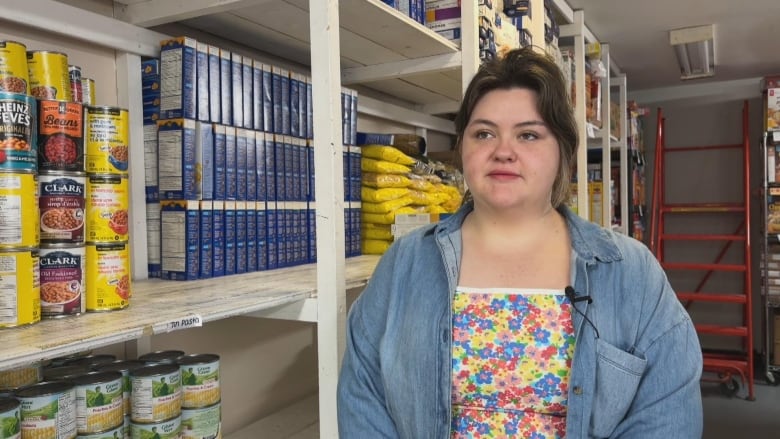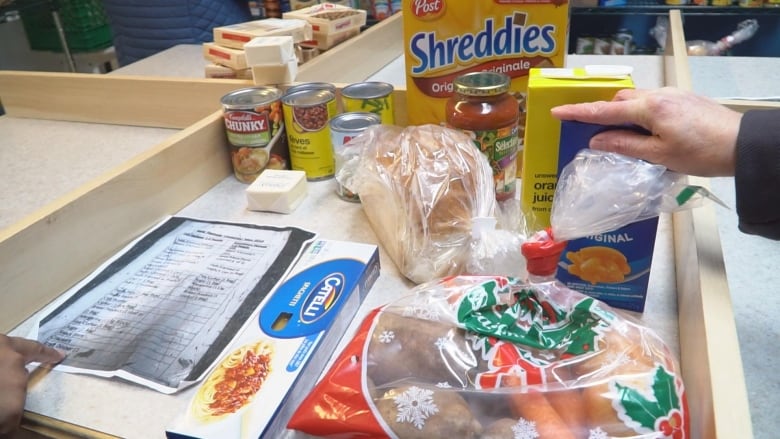
At the Bridges to Hope food bank in St. John’s, spiking demand is forcing staff members to cut back on what they give to the hungry.
The food bank used to give clients a full box of cereal, but starting this August it began reducing the quantity, instead giving four cups portioned out in a plastic bag.
They also used to hand out one full cup of instant coffee. Now it’s only three-quarters of a cup, says executive director Lesley Burgess.
“Just kind of small, cost-saving measures like that, because we don’t want to see our hampers get any smaller,” Burgess says.
“We are already only able to offer four days’ food at a time.”
She says they’re also assessing the items in their hampers and surveying clients to see how helpful each grocery item is as they consider switching some to be more cost-effective.

Burgess says the belt-tightening is because they expect to serve thousands more people this year compared to last.
She suspects 17,000 people might walk through their doors by the end of the year — a 30 per cent rise over last year, when the food bank served 13,000 people.
Bridges to Hope isn’t the only food bank in Newfoundland and Labrador seeing a spike in demand.
“We could see upwards of four new people registering, and that’s every day of the week when we’re here,” Kaitlin Clarke, communications and outreach co-ordinator at the St. Vincent de Paul food bank in Carbonear, a rural town more than 100 kilometres away from St. John’s that serves a 350-kilometre area.
“Demand is crazy high and everybody’s struggling. Donors are struggling. We’ve seen people that were previously regular donors [to] us that have now come to us looking for help,” Clarke said.
Food banks reaching limit
The cutbacks come as food bank usage in Canada has reached a record high, with more than two million visits in March 2024 alone, according to a new report from Food Banks Canada released Monday that surveyed about 2,590 food banks.
Food bank demand is nearly double what it was five years ago, according to the report, when about one million people visited a food bank during the month of March 2019.
Food bank use in Canada is up six per cent since March of 2023, the report also says.

“Food banks are not designed to support this type of rapid increase in such a short period of time. As a result what we’re seeing is many are buckling under the strain,” said Richard Matern, director of research with Food Banks Canada.
The surge in food bank demand also echoes a grim statistic in the report that Bridges to Hope has been seeing first-hand: in the last year, more than half of Canada’s food banks have been giving out less food than usual while trying to avoid running out.
Even more dire, this year’s report says nearly 30 per cent of Canadian food banks themselves have run out of food.
“This is showing that perhaps really we’re reaching our capacity and our limits of what we can provide on the ground,” said Martern.
Inflation taking a bite out of budgets
The report says increases in housing and food prices are driving more people toward the food bank.
“It’s not uncommon for us to talk to someone whose rent has just been increased $300 or $400, and for someone on a fixed income, that money’s got to come from somewhere. And usually it’s the food budget that is the first to be taken from,” Burgess said.
The report also says more food bank clients are working, at 18 per cent up from 12 per cent in 2019.

It also reports that nearly 70 per cent of food bank users live in market rental housing, while a third of clients are children.
The report also wrote that 32 per cent of clients are newcomers to Canada who have been in the country for less than 10 years.
Meanwhile, some of the clients at the food bank Clarke runs face an additional barrier between them and their next meal.
“For a lot of people, they either don’t have transportation or they have a limited budget for gas and stuff, especially in an area with no public transportation,” said Clarke.

Meanwhile, both Matern and Burgess are calling on governments to step up and tackle food insecurity, immediately.
“Food banks can relieve hunger today, but they can’t prevent hunger tomorrow,” Burgess said.
Both say governments need to work on creating more affordable housing, a stronger social safety net, along with creating a groceries and essentials benefit for people who are struggling with food insecurity.
Ideally, Burgess says she’d like to see that as a part of the GST credit to ensure people who need relief have the money to purchase the essentials they need.
Download our free CBC News app to sign up for push alerts for CBC Newfoundland and Labrador. Sign up for our daily headlines newsletter here. Click here to visit our landing page.